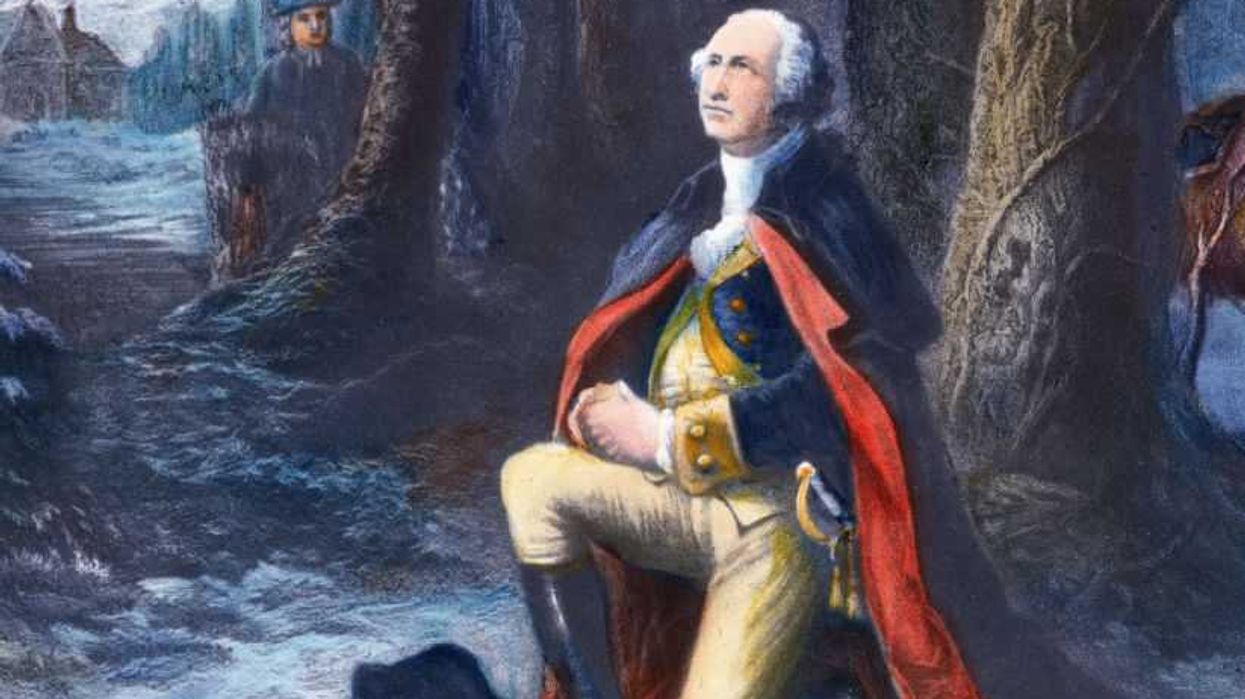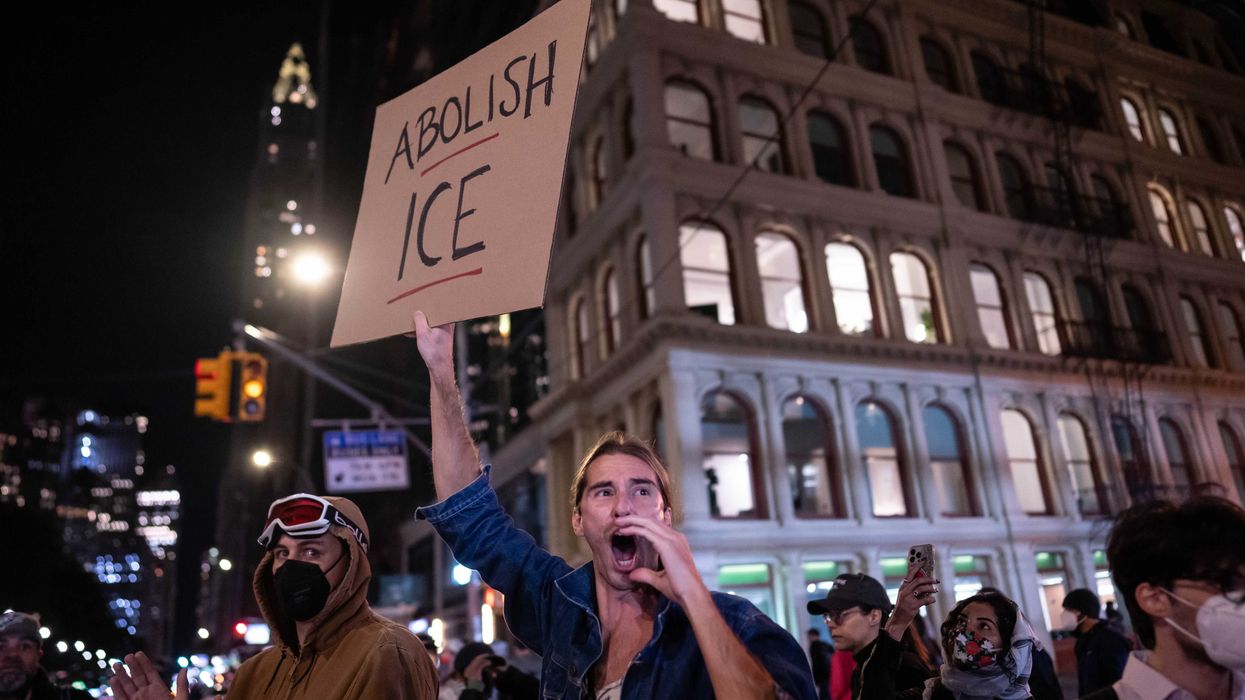by Meg Storm
Ever wonder what goes on behind the scenes at Mercury Radio Arts? Just how do all of Glenn’s crazy ideas get done? Does anyone ever get a chance to sleep? Well, over the next few months we are going to take you inside MRA, giving you the inside scoop on everything from publishing to special events, 1791 to Markdown to GBTV. We will be interviewing members of our New York, Columbus, and Dallas staff, bringing you all the info, so you can know what it’s really like to work for Glenn. Part 1 (Kevin Balfe – Publishing), Part 2 (Liz Julis – GBTV/Special Events), Part 3 (Joel Cheatwood: CCO & President of TheBlaze), Part 4 (Eric Pearce: VP, TV Operation of TheBlaze)
You know you love your job when you call traveling to Israel and not sleeping for two weeks the best experience of your professional career. But that is exactly how Michele Vanderhoff, Network Operations Manager at TheBlaze, describes the event.
Vanderhoff, who studied newspaper journalism and political science at Syracuse University, first thought she wanted to be a foreign correspondent for a major newspaper, and then she thought she wanted to be a producer for a news program, and yet she has somehow found herself overseeing the ever-growing production staffs in two states for a major online streaming network.
“I thought I wanted to be a foreign correspondent and write these big long pieces about international politics from war zones,” Vanderhoff said about her initial ambitions. “One of my professors had worked for the Chicago Tribune in the 1960s, and he had all these great stories about journalism in the 60s. He basically embodied how I pictured a newsroom. I kind of romanticized journalism in my head.”
She might have been going to school to be a newspaper reporter, but, ironically, Vanderhoff never wrote or worked for a newspaper. Instead, she found internships at two highly regarded radio stations – WAER in Syracuse and 77 WABC in New York – where she gained the bulk of her production experience.
“So even though I was training to be a newspaper reporter, I actually interned as a producer for WAER, which is the NPR affiliate in Syracuse,” she explained. “I would go out and get the interview, come back and write the piece, voice the piece, and then work with an editor and get it done. That’s kind of when I really started to love the production aspect of things.”
It was during her internship with 77 WABC that Vanderhoff learned just how much she loved the industry. “I interned with 77 WABC in New York. It is where I learned how to write for broadcast. Their newsman – his name was George Weber – taught me how to write succinct, concise, get it out there type stories.”
Weber even used one of her stories on air. “I remember the first time he let me write one,” she recalled. “He was like, ‘This is going to be a test run. This isn’t going to go to air, don’t worry.’ I think like Michael Vick was very much in the news, Lindsay Lohan was very much in the news, and so I wrote something up. About 30 seconds before we went to air, he said something like, ‘Yours is better than mine. I am going to use yours.’ I remember just sitting there with my mouth open thinking I wrote that! I loved the newsroom after that.”
Despite these wonderful opportunities, her experience was still solely in radio. “I was completely foreign to TV, which is funny because television is my life now,” she said laughing.
Vanderhoff graduated college in 2008, a rough time for any business, but the media industry was particularly hard hit. She ended up taking a job in ad sales at CBS – a job she hated, but it paid the bills.
“I did ad sales for six to eight months. I hated every second of it. I was terrible at it. The only part I was good at was producing the commercials afterwards. So I was there, and I tried really hard, but it wasn’t working for me.”
With the economy not in her favor, Vanderhoff had to take matters into her own hands. Her alma mater, the Newhouse school at Syracuse University, has a large alumni network that she knew she had to take advantage of. “I wanted to start networking,” she said. “[Syracuse] put me in touch with a producer at CNN, Josh Belsky.”
It was a phone call with Belsky that ultimately got her in the door at CNN. She went in to meet with one of Belsky’s colleagues, Eric Pearce, a producer at CNN at the time and current Vice President of Television Operations at TheBlaze. “Eric Pearce called me, and he is like, ‘Come in. Let’s have a conversation.’ I go over there, and he at the time was on Issues with Jane Valez-Mitchell. I went in, and we talked for a while. He called me the next day and offered me a freelance position, which I so happily took.”
At CNN, Vanderhoff was a production assistant for Issues with Jane Valez-Mitchell. She worked closely with Pearce, a producer on the show, and her fellow production assistants – Adam Ford and Brett Zoeller, both of whom are now producers at TheBlaze.
“So while I was at CNN, I worked with Adam Ford, who is now down in our Dallas office, and Brett Zoeller, who is here in New York,” she said. “The three of us – that was my team. Eric was like the dad, and we were his kids. I made the move [to Mercury] first. I was here for a year or so, and [Adam and Brett] were bugging me constantly. They eventually came over too.”
At CNN, Zoeller, Ford, and Vanderhoff were known for their teamwork. “It was very high pressure with breaking news and stuff, but we knew we had each other’s backs,” she said. “We just worked really well together.”
There is a sign on Vanderhoff’s desk that reads ‘BAM’ – a catch phrase that served as a running joke for the production team at CNN. “That was the running joke for the three of us because seriously everybody told us that we were the best production assistant team that they had,” she explained.
“That was the order we came to Issues with Jane Valez-Mitchell: B was Brett, he came first; A was Adam, he came next; and M was Michele, I was last. Adam and I made that sign for Brett on his first day at Mercury.”
Vanderhoff made the move to Mercury in July 2010. “Eric brought me over as an associate producer. I sat by myself over in the corner on the other side of floor, before there was a Blaze newsroom,” she recalled.
“I remember Eric didn’t know what to do with me at first,” she continued. “I ended up like writing critiques of the radio show. And he had me looking for Benjamin Franklin quotes. But that was just the first week. After that, everything just hit hyper speed, and it hasn’t slowed down since.”
She assumed she would stay on the editorial side of things – producing packages for various projects and helping to create content – but as is customary at Mercury, things didn’t really go as planned.
“I kind of always thought I would stay on a more editorial track,” Vanderhoff explained. “But I had a knack for the operations stuff. I was good at just kind of organizing everybody. I was good at distributing jobs and assignments.”
“I actually remember the day that it happened,” she continued. “Eric and I used to sit next to each other when the production team was a lot smaller, and we used to send out an email everyday with assignments. He was in and out of meetings, and I was like, ‘Do you want me to send out the assignment email?’ He was like, ‘That would be great.’ And I have done it every day since. From there, I would just see the need for something to get done, and I would just do it, or I would see that he was just doing two different things, and I would be like give me this one.”
After a few months, Pearce and Vanderhoff sat down to revaluate. “We sat back down, and Eric was like, ‘You’re really not doing editorial anymore. You are doing operational stuff. Let’s make that official.’ That’s how I ended up here,” she said with a laugh.
Vanderhoff’s hard work paid off. She quickly worked her way up to Network Operations Manager, which comes with the responsibility of overseeing production in New York and Dallas. For someone like Vanderhoff, who likes to be “really hands on,” the sheer fact that she couldn’t be two places at the same time seemed daunting.
“I like to make sure anybody I am working with knows that they can rely on me – knows that they can come to me. And I have that rapport with New York because I am here. I am busting in on them all day asking how is this going, how is that going,” she explained. “I am really lucky that I have good conversations with everyone in our department. They can tell me exactly what they are thinking, and they know that if I can make it better, I will.”
“With Dallas, I can still talk to them, but it is not the same as being able to walk in and have a conversation,” she continued. “But we have all gotten a lot better with our communication, which has made it a lot easier. Checking in with each other a few times a day, and really seeing what the production needs are for Dallas, and seeing how I can help them balance their work load, help them manage their time.”
She keeps things operating through organization – lots and lots of organization. The staff is still relatively small considering Mercury’s productivity levels, but everyone is dedicated and wears many hats. It has become a bit of a joke around the office that Vanderhoff keeps it all running with the help of her trusty white boards that list the members of her team, where they are, and what they are doing (virtually at all time), but it’s the best way to keep all the moving parts straight.
“Since I now have my hands on both places, I can now hopefully make it as efficient as possible,” she said. “Everyone is so dedicated. And everyone loves what they do. I think that really shows in what we produce every day.”
Since Vanderhoff joined Mercury right before the Restoring Honor events in Washington D.C. in 2010, she wasn’t fully in the trenches, but by the time the 2011 Restoring Courage events came along, Vanderhoff would not only be in Israel, she would be forgoing sleep and her sanity for a week.
“It’s funny because I love talking about Israel with people because everyone has such a different vision of what it was,” she said. “Some people are like, ‘Oh my God it was so beautiful, and I saw the most amazing things.’ I saw a control room, and a hotel room, and that was it. But it is still – I will always say this – the best experience of my professional career. Hands down.”
For Vanderhoff, who had never left the United States and didn’t speak the language, figuring out how to manage her staff in a foreign country with limited resources was not an easy task. “The stuff that we did there just blows my mind because we were operating off road Macs, laptops, and we had hard drives linked to each other, and that’s what we edited off of. That’s what we used, and it didn’t blow up. As soon as I touched down until the moment we left, it was just go, go, go, go, go,” she said.
She became somewhat of a dispatcher over the course of the trip – sending crews X, Y, and Z to points A, B, and C to capture stories and then return to the hotel that was serving as the makeshift production studio.
“We did capture these really amazing stories. And then we would come back. And we called our home base the Frat House because that is what it became,” Vanderhoff said. “It was just all of us in this one beautiful room, but all on top of each other, ingesting media, breaking it down, putting it together, and there were just a lot of sleepless nights. A lot.”
The majority of the GBTV (now TheBlaze) staff flew back to New York on the day before Hurricane Irene was set to hit the east coast. It was a mad dash back to the city because GBTV was set to launch in just two weeks. “We got home from Israel that Friday and there was a hurricane coming. I was on the ground a few hours before my building got evacuated,” Vanderhoff recalled. “I still hadn’t slept.”
Her instinct was to drive to her mother’s home in Pompton Lakes, New Jersey. While the town floods often, her mother’s home hadn’t flooded in many years. Because she was concerned about not being able to get back to the city for work on Monday, Vanderhoff decided to go to safer ground.
“I called my Mom and said that I really didn’t want to come over in case the towns around her are flooding – we are launching a network, I am going to need to get to work. I went to my Aunt’s house in Clifton, New Jersey instead. For the first time in half a century, my Mom’s house actually flooded. It actually flooded very badly. It was a scary situation,” she explained.
“I remember after the storm passed, everyone was like ‘That was it. That was no big deal,’” she continued. “My hometown was devastated. My hometown is still devastated. There are still dozens of houses on each block for sale. There are three or four houses on each street that are completely abandoned. At the height of it, it was four to five feet of water in our house. My Mom had to get rescued by the National Guard.”
Vanderhoff and her fiancé went to pick her mother and brother up from the Red Cross drop off location. “I said to her, ‘Mom, I am coming to get you. You have to leave.’ My fiancé and I found these back roads and mountains and finally got to the Red Cross drop off point. She and my brother had to get onto a National Guard boat, which brought her to a Humvee, which brought her to the Red Cross center. At the Red Cross, my fiancé and I were setting up beds and cots and helping organize the kids because it was shear chaos. So it always bothered me when people said, ‘Oh nothing happened’ because my hometown is devastated. That was really hard.”
She brought her family back to her apartment and called several people at Mercury to let them know she wouldn’t be at work on Monday because she would be on the phone with insurance companies and the like.
“That actually brings me to my favorite Glenn story,” Vanderhoff said. “Glenn was the first person from Mercury to call me. I had finally gone to sleep, so of course I missed his first call. I was just passed out on my couch. When I woke up he called again, and I answered the phone, and it was Glenn asking if I was okay, if my family was okay. I very emotionally told him everything that happened, and the love that I felt from him was just - I can’t even explain it.”
“I have always said he is the best boss in the world, but he really showed that Mercury is more than just a workplace. It is a family,” she said emotionally. “He literally said anything that I need – if my family needs a place to stay, let him know, he will help set it up; if they need clothes; if they need food; if they need anything. And it was just the outpouring of kindness that Glenn and Tania showed us those first couple of days. It was just – I get emotional even thinking about it still. At that time I had only been at Mercury for a year, and I had gotten to know Glenn, but not really on a personal level, so the fact that he took the time out and did that just means everything.”
Glenn then asked Vanderhoff if he could speak with her mother. “He called my mom and sat on the phone for a while – 30 or 45 minutes. And we all know what Glenn’s schedule is like, so the fact that he was able to do that. He had never met my mother, and they actually prayed together on the phone, which I know was a very special moment for my Mom. To this day she adores Glenn, and not just because of what he does, but because of the person that he is.”
“It is a small story, and people could say that it doesn’t say much, but it meant so much,” Vanderhoff said. “I think it shows Glenn’s heart and what this company means to him and what his employees mean to him. To me that sums up Glenn Beck.”
Vanderhoff made it back to work not too long after that, just in time for the launch of GBTV. “It was so crazy leading up to the launch of GBTV. Since all of our efforts were focused on Israel for so long, we came back and we had never done any of the things we were trying to do,” she said.
What is often taken for granted at a major network was now the responsibility of Vanderhoff and her team. “That’s what was so interesting,” she said. “We were producing a better looking TV show than anything on the major networks with paper and glue. Like that is essentially what we had.”
The network has grown substantially since those first couple of days, and as it continues to grow so too does the staff and, therefore, the scope of Vanderhoff’s job. But if past performance is any indication, it looks like everything will be just fine.
“As crazy as it is, I love it,” Vanderhoff said smiling. “And that is one of my favorite things about Mercury in general – you constantly have this feeling of purpose and know that none of your efforts are being wasted. Everything you are doing is for a reason. You go crazy getting to that reason, but you know what the goal is. And seeing it come together is so satisfying.”



 AASHISH KIPHAYET / Contributor | Getty Images
AASHISH KIPHAYET / Contributor | Getty Images
 Harold M. Lambert / Contributor | Getty Images
Harold M. Lambert / Contributor | Getty Images Adam Gray / Stringer | Getty Images
Adam Gray / Stringer | Getty Images Anadolu / Contributor | Getty Images
Anadolu / Contributor | Getty Images